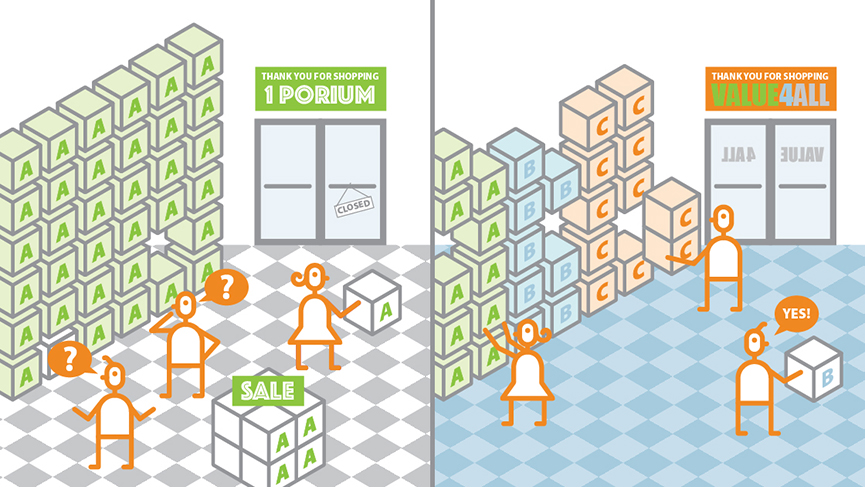Sometimes more is more in the eyes of consumers—especially in today’s highly personalized world. As products become increasingly complex, how do you avoid confusing potential buyers?
Many businesses mistakenly believe simplicity is the cure-all for promoting consumer understanding. But, I’m going to let you in on a little secret: simplicity is often false hope for businesses looking to grow in their market.
Read: “Educating consumers to improve your bottom line”
The problem with simplicity
To keep up with customers’ increasing demands, businesses must do more: create more products and services; support more diverse customer bases; and accommodate more regulations with less customer disruption. You can bet your competitors are doing just this. Yet, there’s a lot of complexity in tackling these demands. While that complexity is confusing, disruptive, and seemingly out of our control, it’s necessary.
Here’s the twist: the solution to this complexity isn’t simplicity. Simplifying, like cutting products or making a process easier, can put you at a competitive disadvantage. Further, it can serve only to mask the complexity you’re battling—it rarely resolves it. Inevitably, complexity creeps back after you’ve simplified and attacks from another angle.
But there’s a silver lining to the frustrations of complexity: if you embrace it, you have the potential to create more value for your business and your customers. Some of the most successful businesses use complexity to drive innovation and identify new ways to grow. It helps businesses to outperform and differentiate themselves from even the most relentless competitors.
Simplicity just can’t create that kind of value.
Harness clarity to communicate the value in complexity
So you’re embracing complexity as a way to avoid confusing potential buyers and achieve more—so now what? First of all, we think the best way to achieve complexity’s value is to harness the power of clarity.
The difference between clarity and simplicity:
The two are often mistakenly used interchangeably. Unlike simplicity, clarity isn’t about eliminating complexity. Instead, it’s about explaining how complexity adds value to your business. If simplicity means cutting products from your portfolio, clarity means creating an ordered hierarchy to make it easier for customers to see each product’s value.
If our client had simplified and cut this new data service, customers would’ve missed out, and our client wouldn’t have capitalized on the opportunity to better serve their customers.
A real-world example
Recently, we helped a leading heavy-equipment manufacturer clarify their offering. Well known for its products, our client wanted to take the next step and diversify its portfolio by adding consultation-based data services. Some of the client’s internal teams said not to bother—customers would get confused if they were offered so many complex options. But our client was confident that data services would provide more value to its customers. So we partnered together to clarify its tiered data service model. Our support included creating go-to-market strategies, consultative sales training, organizational and franchise modeling, and pilot designs—all to clearly showcase the offering’s value to internal teams and customers.
It’s working. Because our client embraced clarity, their customers are realizing value that they never knew our client could provide. If our client had simplified and cut this new data service, customers would’ve missed out, and our client wouldn’t have capitalized on the opportunity to better serve their customers.
Up next: Why are my sales messages still not connecting?

